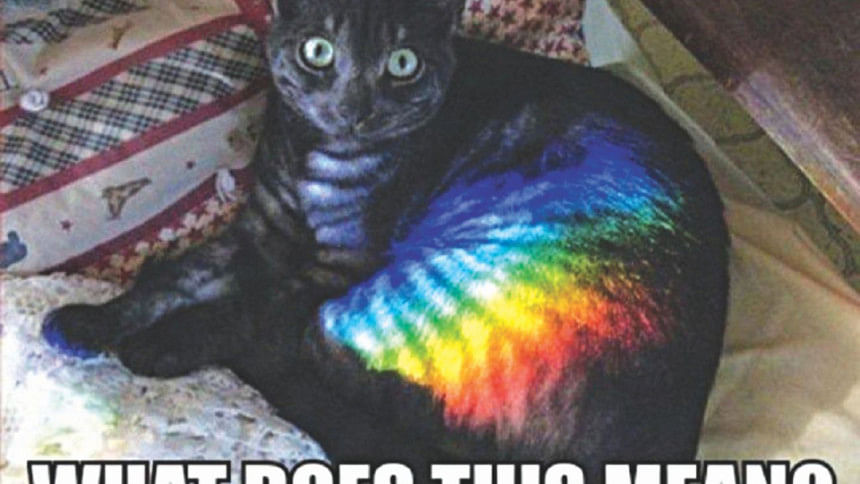EXPLAINING THE RAINBOW

Ever since an especially fascinating Science class in middle school, the pouring of rain followed by sunlight to this day makes me look up and around in anticipation of a rainbow. It has endured as a symbol of all things good across cultures and decades, and the diversity of interpretations it lends across the world is fascinating.
We're all aware of the science behind it. Water droplets receiving the rays of sunlight disperse them into the spectrum of wavelengths making up visible light; double refraction breaks the sunlight into its component shades of VIBGYOR and one of nature's prettiest masterpieces is made visible.
Henceforth stems the age-old saying of "Going through the rain to get to the rainbow", stressing on the need for patience, through experiences both good and bad, that leads to the end result. A Physics textbook diagram of light passing through a prism is also what gave us the image we've come to relate to Pink Floyd since the release of "The Dark Side of the Moon"– with the triangle symbolising the theme of freedom in their song lyrics, and the rainbow in tribute of the lighting used at their concerts.
Travelling a few decades back, the 1939 release of the first The Wizard of Oz movie in Technicolor brought with it the iconic song "Over the Rainbow". Fans of the Cowardly Lion, Scarecrow and Tin Man watched Dorothy singing of a colourful land behind the clouds where dreams come true – a rendition which may also have been a testament to the Dust Bowl droughts that hit Kansas in the 1930s. In Dorothy's yearning for a magical realm, as well as the real-life context the song seems to draw from, the presence of a rainbow symbolised hope for better days – and a better place – in the Wizard of Oz.
But the magic of rainbows traces even farther back to Irish legends, Buddhist philosophies, Norse traditions, and Chinese and Celtic wisdom.
The Buddhist Tantra refers to it as the "body of light" – the highest meditative state a person reaches when they are freed from all earthly ties. In Chinese legend, the five-part spectrum of lights represents perfect harmony and balance as in the Yin and Yang, while the two-headed dragon crowning the rainbow bridge acts as a celestial pathway between those on earth and the heavens.
The notion of the rainbow bridge connecting this world to higher enlightenment is also shared by Norse mythology where the rainbow, i.e. the Bifrost retains ties to the realm of Asgard.
Celtic wisdom, meanwhile, thinks of the arc of colours as a symbol of the treasures of the female. From their belief in the rainbow's powers of enabling reproduction springs the Irish legend - the leprechaun's gold at the end of the rainbow.
In Christianity, the rainbow is a sign of God holding back on His wrath, relieving the world from a second flood that would wipe out humanity.
The freedom, optimism and beauty symbolised by the rainbow are what marked it as the choice of flag to drag queen Gilbert Baker for the LGBT movement – and the recent outpouring of "gay pride" sentiments have made it synonymous to the rainbow; but it is so much more than just that. It stands for happiness, optimism, creativity and magic.
Amidst the grit of concrete jungle, a rainbow makes us look up at the sky – a rather amazing achievement these days, and it makes a child want to put crayon to paper.
Sarah Anjum Bari is a ravisher of caffeine and prose, with a heart that lives in Parisian cafes. Reality checks to be sent in at [email protected]

 For all latest news, follow The Daily Star's Google News channel.
For all latest news, follow The Daily Star's Google News channel. 



Comments